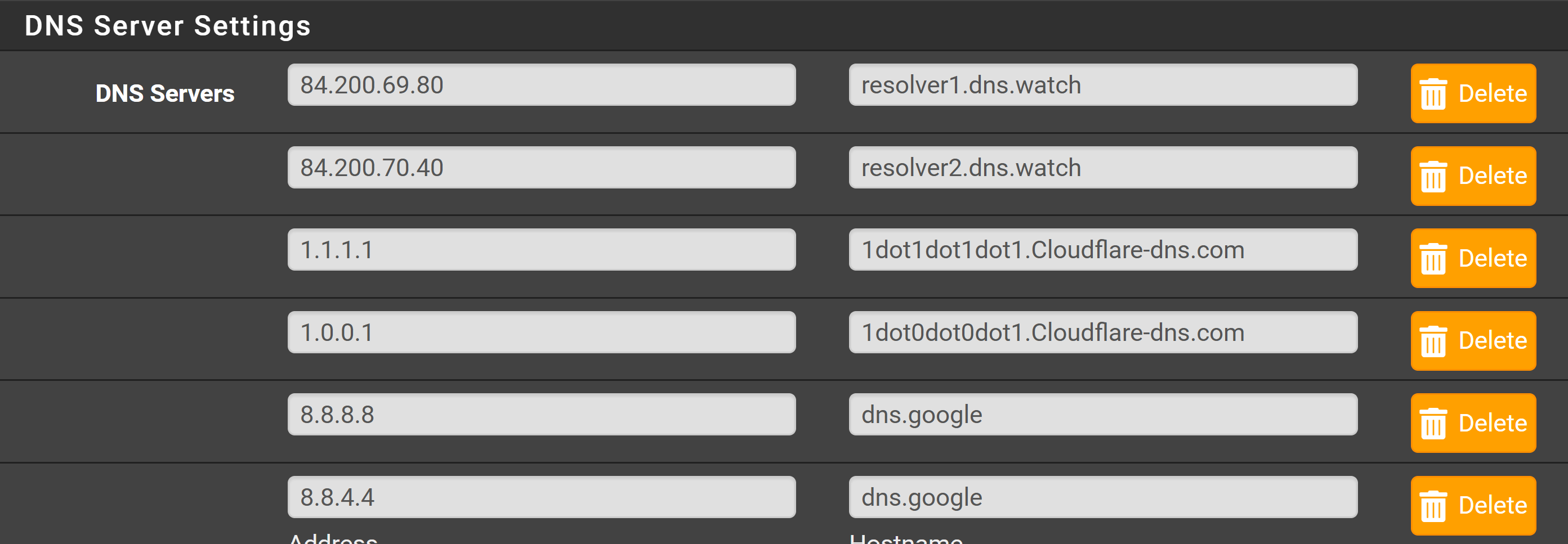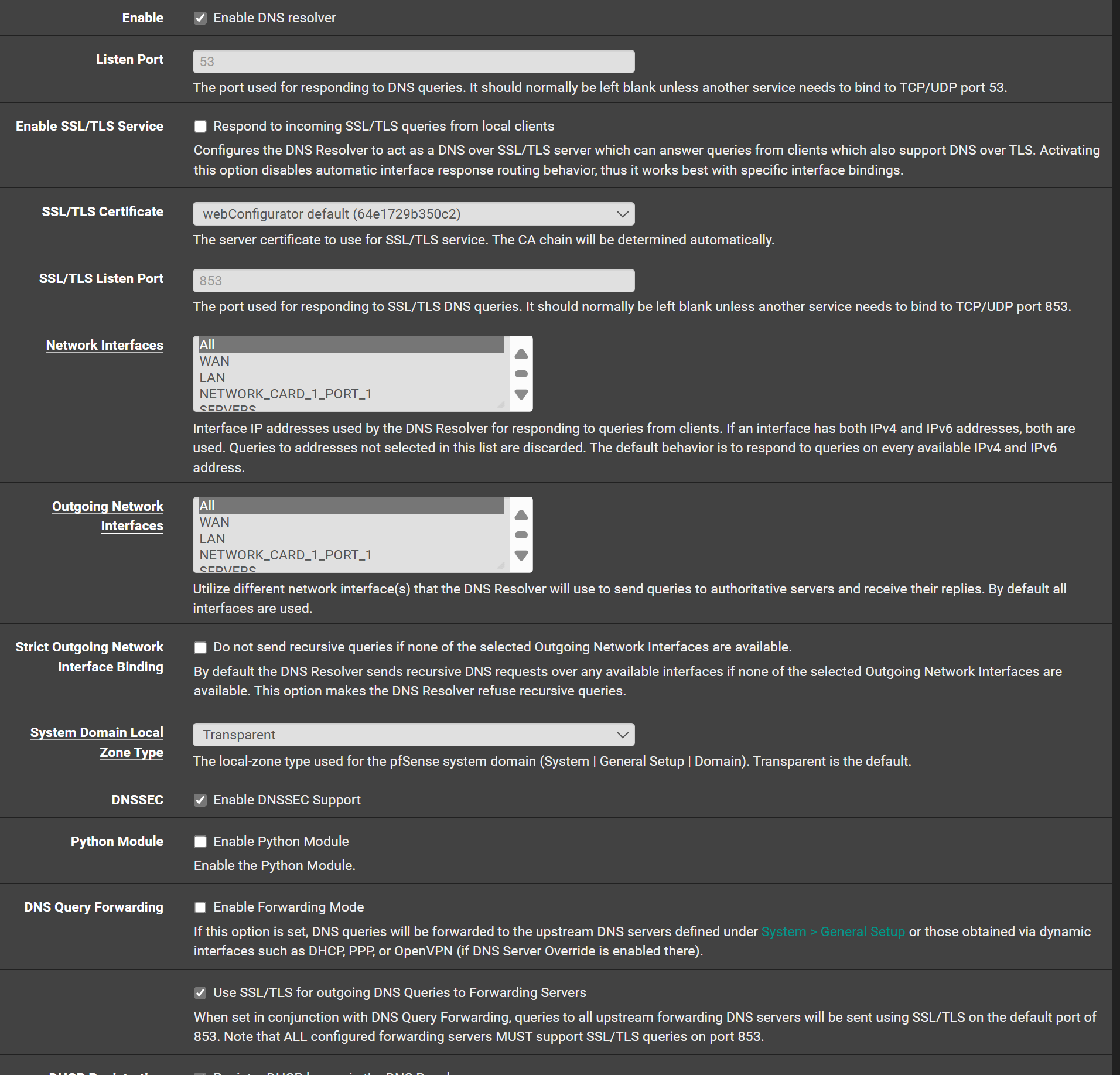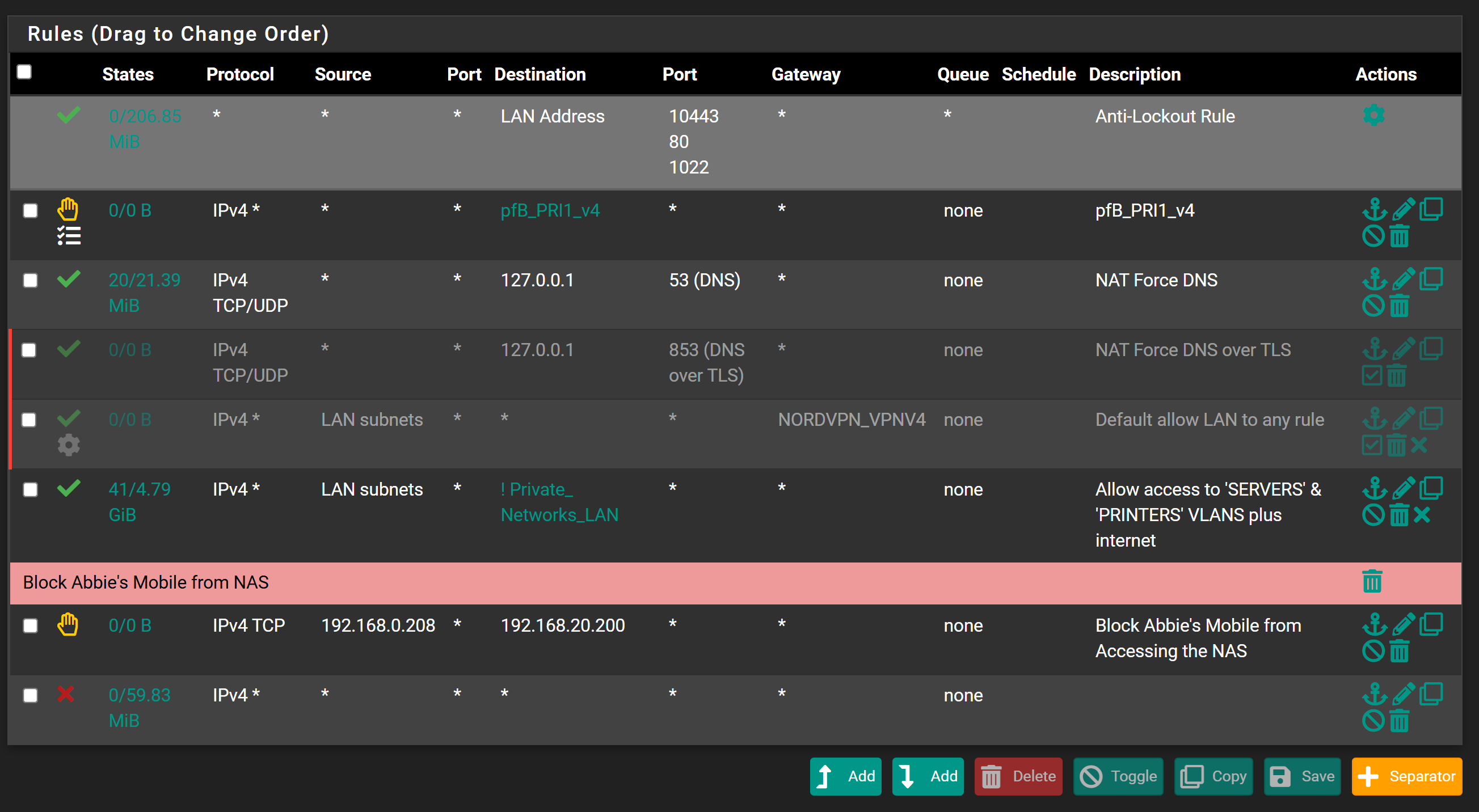Re-directing Client DNS Requests
-
@stevencavanagh You have some rule forcing traffic out your pppoe connection?
-
@johnpoz said in Re-directing Client DNS Requests:
@stevencavanagh You have some rule forcing traffic out your pppoe connection?
@johnpoz said in Re-directing Client DNS Requests:
@stevencavanagh You have some rule forcing traffic out your pppoe connection?
Yes, saw that and have no idea where it came from unless I added it for OpenVPN or PFBlocker added it.
But that won't cause any issues with DNS redirecting will it?
-
@stevencavanagh I have no idea what that rule is doing.. disable it.. Do you still have internet?
Your browser is set to use secure dns, ie doh.. That should be OFF if you want your browser to use your local dns.

That settings says hey whatever the dns is, use doh to talk to it.. Your setting your machine to use 8.8.8.8 so yeah your browser is going to ask 8.8.8.8 via doh.
-
Yep, disabled edge setting as suggested and a DNS leak check now only shows 1 server:-

The IP is that of my ISP WAN IP address, which I assume is correct, despite having manually set the DNS server to google on the PC.
Disabling the WAN floating rule doesn't seem to break the internet or anything so unsure why it is there!
So one question not the clients will go direct to Pfsense and then out to root servers etc, how do I know which they are using and will logs be kept??
-
Another quick question, why when I look at the states I see this still (I killed the states first) :-

It still references 8.8.8.8 and cannot see where this now comes from?
-
@stevencavanagh said in Re-directing Client DNS Requests:
how do I know which they are using and will logs be kept??
Huh? The clients don't go anywhere other than pfsense.. Unbound on pfsense is the only thing that would talk to roots.. And it only talks to roots to find out what NS to talk to for the tld.. It would then ask the NS of that tld for the NS of the domain.tld, It would then ask the NS of that domain.tld for your record..
It still references 8.8.8.8 and cannot see where this now comes from?
Well yeah that is your redirection.. See in the where original dest is 8.8.8.8:53, which got redirected to loopback 127.0.0.1:53
You have a client on 0.207 trying to talk to 8.8.8.8 that was redirected, and also a 0.21 device also wanting to ask 8.8.8.8 that was redirected.
What exactly are you wanting to log, what client asked for what? You can enable logging in unbound if you want.
-
So logs are now utterly irrelevant or don't exist, which is fine.
192.168.0.207 is no longer set manually to 8.8.8.8, it is set to Auto
192.168.0.21 is also set to DHCP and DNS showing as 192.168.0.1 (LAN gateway).
So still not sure where the 8.8.8.8 is now coming from? Do I need to reboot the PC and switch?
I suppose the only issue now would be is a client decides to use DOH! Is there an easy way to prevent this, I suspect not but thought I would ask!
-
@stevencavanagh those states could be old if you have changed your clients to now use pfsense IP.
You can try and block doh, lots of people here do.. There are lists of known doh servers that you can block, pfblocker has some lists of doh servers.
But yeah since doh uses 443, just like the rest of the internet it can be hard to block.. If some client decides do use some unknown IP via doh. But most any client like some browser is going to use some well known doh server, which can be blocked via its IP..
What do you mean logs are now irrelevant? You can log what a client asks for if you want.
-
Ok, I'll clear the states and retry. Will need to add a NAT rule presumably for the other VLANs as well as LAN as it appears the server for example is using 8.8.8.8 and I'll change that DNS to Pfsense.
Log wise, I can log where clients go but I was more concerned with ISP or others logging what is going on but that will no longer happen!
Did a browse through the forum for blocking DOH previously and it did not appear to be straightforward. I'll have a look into this. I believe PfBlocker can do it also to some degree I believe.
-
@stevencavanagh said in Re-directing Client DNS Requests:
it did not appear to be straightforward.
There are few different ways to skin the cat, but the problem with doh - is one of its design features is circumvention of local dns.. If it was just about secure dns traffic via a tunnel, then dot on port 853 does this.. Which is easy to block by the local admin, etc..
Hiding the traffic inside the most common port used on the internet is not only about the client talking to some specific NS securely - its also about circumvention of local restrictions.
Your local dns blocks looking up www.domain.tld - don't worry just ask us directly on the port all other traffic uses for internet so its harder for your local admin to block and we will give you the IP..
-
Quick question, slightly off topic.
I set up a OpnVPN client last night, which works fine, eventually! However, with regard to how I have now got the DNS resolver set up, is there anything I should do regarding DNS i.e. use the VPN suppliers DNS or leave as is ie. Down to Pfsense?
Also, was looking to add multiple OpnVPN clients into Pfsense for different countries, which will be useful for the upcoming football season, currently I use a vpn app on the firestick to change countries as need be. Whilst I believe multiple VPN clients is relatively easy, is there an easy way to switch between them at will?
Thanks
Steve



